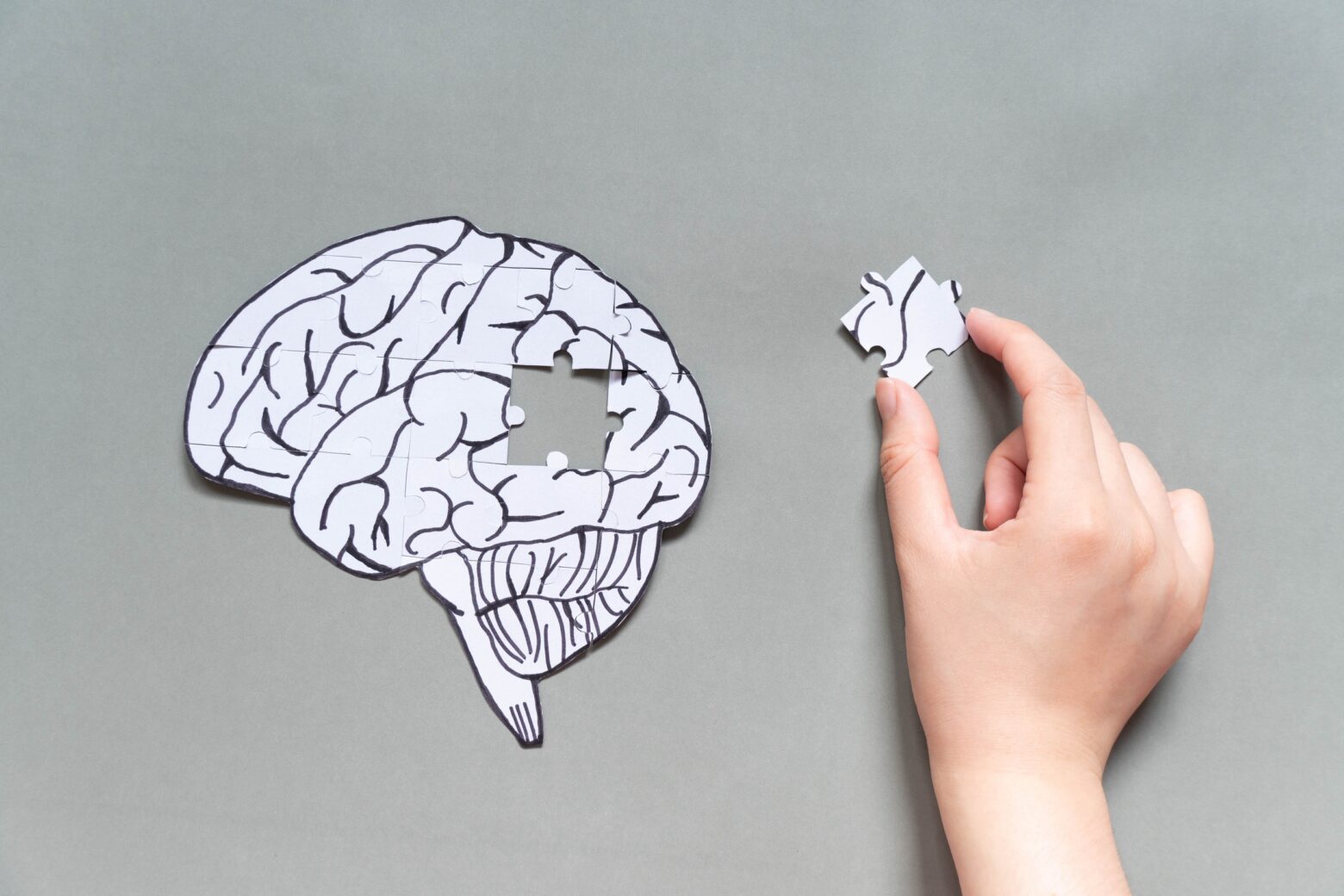Addressing neurodegeneration with ReCODE: Part III of our interview with neuroscience researcher Dr. Dale Bredesen

Editor’s Note: If you haven’t read it yet, make sure to go back to part I and part II of our interview with Dr. Bredesen to hear more about his new book, research, and the upstream insults of Alzheimer’s disease.
According to Dr. Dale Bredesen, a neuroscientist who has researched neurodegenerative diseases like Alzheimer’s for over 30 years, the reason we still haven’t found a cure is because the pathogenesis is so complex and multifactorial. Most of our medications address the symptoms and not the upstream causes.
This is why the first two parts of our interview with Dr. Bredesen were solely dedicated to the types of Alzheimer’s and their varied causes. It wasn’t until this third part that we were finally able to address his treatment—called ReCODE and Keto Flex 12/3.
His recently published book The End of Alzheimer’s Program details his program. This interview simply touches on the various elements including the critical role of diet, why fasting is central to his protocol, and why both exercise and sleep are critical.
Dr. Bredesen promotes regular ketosis. At The Paleo Diet®, we’ve been quite open about our cautionary opinion of long-term ketogenic diets. But, during this interview, Dr. Bredesen describes an approach to ketosis that is different from many of the popular notions of the diet, which led to an interesting conversation and a discussion of our evolutionary diet.
Dr. Bredesen’s ReCODE approach addressing cognitive decline
The Paleo Diet: We’ve talked a lot now about the nature of Alzheimer’s, but let’s talk about your solution. You have the concept of “reCODE” and Keto Flex 12/3. Could you give us the 5-10-minute summary of your approach?
Dr. Bredesen: ReCODE just came from “reversal of cognitive decline.” That’s the idea. We wrote about it for the first time in 2014 and we published 100 cases in 2018. We’ve continued to have many people on this protocol which is the first one that has shown, and published, a reversal of cognitive decline.
The idea is simple, but doing it is not so simple. You have to look at the things that are driving the process. So, you look at what actually causes you to be in that synaptoclastic state, and then reduce the things that are causing it—reduce the inflammation, metabolic abnormalities, and toxin exposure while driving resilience. You want to get optimal levels of hormones and trophic factors, exercise, oxygen support, mitochondrial function, all these things—and then you want to repair them.
It’s those three steps: remove the problem; create resilience in your physiology; and then repair the synapses that have already been lost.
One of the interesting things to me as a scientist is that we’ve always been told there is nothing that will prevent, reverse, or delay the cognitive decline of Alzheimer’s disease. But nothing could be further from the truth.
Dr. Bredesen
The pathophysiology is ongoing for many years. One of the important takeaways here is that a disease we always thought was a disease of aging—of your 60s, 70s, 80s, 90s—is really a disease of your 40s, 50s, and 60s that’s been going on for 20 years before you get a diagnosis. We recommend that everybody 45 or older get checked out with, what we call, a cognoscopy.
So, we want to have appropriate diet, exercise, sleep, stress, brain training, and hormonal optimization.
One of the interesting things to me as a scientist is that we’ve always been told there is nothing that will prevent, reverse, or delay the cognitive decline of Alzheimer’s disease. But nothing could be further from the truth. In fact, the armamentarium [the tools and skills available to a medical practitioner] is massive. There are so many things that can be brought to bear. Therefore, you need to know which ones to use.
Diet
We start with what you’re eating. Again, I was taught in medical school that what you’re eating has very little to do with Alzheimer’s. That’s completely wrong. It has a lot to do with Alzheimer’s and metabolic syndrome, insulin resistance, type two diabetes, leaky gut—all these things that we’re dealing with as chronic complex illnesses in our society.
If you just go back to the biochemistry that is needed for producing and maintaining synapses, you see the need to drive yourself into mild ketosis. There are lots of ways to do that, of course, but we recommend one approach which we call Keto Flex 12/3.
[We’re entering] ketosis [when we’re] getting into 1.0 to 4.0 millimolar beta-hydroxybutyrate [a ketone body that can be used by the brain as fuel]. We’re actually right in the middle of analyzing a breathalyzer [to measure this]. Julie G is doing a great job with that right now and looking at how well [the breathalyzer] correlates [to your actual beta-hydroxybutyrate concentrations]. In the past, there hasn’t been a good way to [measure it] other than finger stick.
The [diet] is flexitarian. So, if you want to be a vegetarian, fine. Just make sure that you don’t have too low vitamin D or too high homocysteine. If you want to be a vegan, that’s fine too. Or, if you want to have some fish and meat, that’s great—just use the right ones, that are low in mercury and high in omega-3s. Meat should be grass-fed beef or pasteurized chicken and eggs.
One of the things that came out of this [research] is how incredibly common choline deficiency is in our society. We should be walking around getting around 550 milligrams of choline each day. I’ve been tracking myself through COVID-19 using [the app] Cronometer—it’s a simple and free way to track your nutrients. Very quickly, I found that I, like many Americans, am not getting enough choline each day. You can get it from things like eggs, liver, and taking citicoline, which we recommend if you’re not getting enough. These things are absolutely critical.
So, the flex part [of Keto Flex 12/3] means flexitarian.
Brain Training
People have complained about brain training saying, “It doesn’t do what people say it does.” Well, actually, if you do it with the right backbone of nutrients, trophic factors, and hormones, it does do what it’s supposed to do—drive your brain.
I should add while we’re on brain training—stimulation. An interesting article just came out from the UK, looking at another form of degeneration, which is age-related loss of vision. They didn’t look specifically at macular degeneration, but that’s the model. We begin to lose rod function and cone function [as we age] so, we have dark adaptation and color discrimination problems. We look at this as just another form of neurodegeneration. It follows the same scientific conceptual rational as Alzheimer’s, Parkinson’s, Lewy Body, ALS, etc., so you need to rebalance.
What happens with these people? Too much blue light. They cannot keep up, you’re overdriving the system. So, for two weeks, three minutes a day [they received] red light. Since blue light is a high energy light and red light is low energy light, [you’re driving] mild stimulation. These people improved both their rod function and their cone function within two weeks.
We’re seeing the same thing in people with cognitive decline where we drive the system. Either we drive it with things like ViaLight’s, or light stimulation, magnetic stimulation, or brain training. It’s the same idea, driving with the appropriate amount—not too much, not too little—is very helpful.
Hormone Levels
Finally, optimizing your hormone, nutrient, and trophic levels is very important. You’re increasing your BDNF, [brain derived neurotrophic factor] when you exercise. You can also increase your BDNF with things like a whole coffee fruit extract.
In practical terms, you’ve got to be diligent about it yourself—get a health coach, check out the book, look at the different pieces, and drive yourself toward an optimal biochemistry.
Dr. Bredesen
So, all these different things: making sure you don’t have sleep apnea, making sure you have enough oxygenation, and then making sure that you have appropriate vascular status, knowing your triglyceride to HDL ratio, knowing your HSCRP, so that you know that you don’t have ongoing inflammation—these are all part of an approach.
You can prioritize [which things to start with], because it’s a little bit overwhelming admittedly, by looking at what your own drivers are. Do you need to focus more on oxygenation at night, insulin sensitivity, or detox?
[Detox] is where fiber turns out to be so critical. It helps you with your detoxification process. I recommend that everybody get checked to see what your status is with respect to toxins, metals, and other inorganics, organics, and biotoxins because detoxing will help your cognition.
So, that’s the approach we call ReCODE. It is, again, conceptually simple. You’re addressing the things that are causing the cognitive decline or causing the risk of cognitive decline. In practical terms, you’ve got to be diligent about it yourself—get a health coach, check out the book, look at the different pieces, and drive yourself toward an optimal biochemistry.
How does Dr. Bredesen’s approach compare to the Paleo Diet?
The Paleo Diet: I appreciated in your book how frequently you went back to hunter-gatherer societies. You looked at our evolution which, as you know, is the whole basis of our science.
I absolutely agree with Paleo principles. You’ve got to honor what your body was made to do.
Dr. Bredesen
Dr. Bredesen: That’s because it works. It’s been interesting to me as a scientist and as a physician who has sat through so many failures—on the side of being a neurologist and my neurological colleagues—one drug after another drug just fail. They fail to see things just as you said, ‘Hey, wait a minute, if we look at how we evolved, what our bodies evolved to do…’ In the last chapter [of my book], I pointed out that many of us are seeking to live in a way that our species was not designed to live. That’s what’s killing us. So, I absolutely agree with Paleo principles. You’ve got to honor what your body was made to do. We were not made to flap our arms and fly, nor were we made to eat large amounts of sugar. We just weren’t evolutionarily designed to do that.
The Paleo Diet: You did bring up eating animal-based foods in the past. Through evolution, we’ve recognized that the meats available now are very different from what we hunted 20,000 to 100,000 years ago. The issue now is that its composition is very different and it’s much heavier in toxins. That’s one thing we always have an issue with in the research; it seems when it comes to protein, the research doesn’t really like to recognize quality differences.
Dr. Bredesen: Professor Paul Clayton from Oxford does a nice job at pointing out how nutrient poor our diets are today. Julie G, the one who wrote the new book with us, is especially high on her use of fish, meat, and pastured chicken. She has a high fat, typically about 70 percent calorically speaking, and low carb diet with about 15 percent protein. Even though she is eating salads left and right, she is still having a low carb diet and exceedingly low simply carb diet. She just doesn’t touch simple carbs. So, where does she get her fats? EVOO—extra virgin olive oil—and monounsaturates like nuts, seeds, and avocados. I think you can do a great job with a significant amount of fish and meat, yet still have good fats like avocados.
One thing that I think we all agree on is that sugar is a killer. In fact, we’ve just been exposed to more than we are evolutionarily designed to handle. I’m as guilty as the next guy; I grew up in Cleveland in the 1950s and ate all sorts of horrible processed foods and sweet stuff because what else does a little kid like? You give a kid a Twinkie and he’s going to love it! I grew up in that era and now have to figure out what I can do to improve my own future. So, I think that all these different diets agree on at least that one point.
The Paleo Diet: I would say, in general, we agree a lot more than you might think. There’s no ethnographic evidence that we ever ate a pure vegan diet, nor a pure carnivore diet. While there’s a big range, it was always a mix. But what you tended to see was by calorie, we ate a fair amount of meat, but meat is calorically dense. When you look at it by volume our ethnographic evidence is more towards a plant-based diet. Our Paleolithic ancestors were eating by volume more plant food than animal food.
This is one of the things I wanted to address with you because when I hear keto, I always worry about how people are getting there. I’ve too often heard keto followers talk about, ‘Keep those vegetables away from me, but hand me the stick of butter.’ It doesn’t take much to realize that’s not a healthy approach.
Dr. Bredesen: It’s interesting to me, and David Perlmutter has pointed this out, when your body is taking in meat, your body’s response is, ‘Hey, the hunt was good. Go ahead and shed the pounds.’ You don’t have to keep all that extra fat on because the hunt was good [there’s a lot of food available]. On the other hand, when you’re eating fruit, it’s saying, ‘Hey, winter is coming, keep that fat on you.’ So, what’s been intriguing to me is to see how people eating meat do great at shedding weight and do great, surprisingly, with their lipid profiles. It’s really those simple carbs that destroy your lipid profiles. I think seeing the biochemical response to these things is really helpful.
The Paleo Diet: One of the places that I would actually say we do diverge a little bit—and I’m going to cite a researcher we’ve been talking with down in South America, Dr. Douglas London, who studies one of the last remaining true hunter-gatherer societies in the world—is the fact that recent evidence shows hunter-gatherers eat a lot of fruit. That said, we talked to Dr. London about the fruit that they eat, and as you pointed this out in your book, modern fruit is very different.
We are frugivores according to our overall digestive track, but we’re eating the wrong fruit.
Dr. Bredesen
Dr. Bredesen: If you look at our dentition, our gut, our genetic mean, on and on, and ask, what are we meant to be; the closest thing is that we are frugivores. The problem is just what you said: we have unfortunately developed fruit that is far too high in simple carbs and we’re killing ourselves with it. So, we are frugivores according to our overall digestive track, but we’re eating the wrong fruit.
The Paleo Diet: Unfortunately, this isn’t something we can truly fix. We just don’t have those foods available to us anymore. But there are some things we can do such as stimulating Paleolithic fruit by growing a bunch of different fruits together like in the wild. When you do that, it changes the nature of the fruit.
Dr. Bredesen: As people demanded certain things like pastured chicken and wild caught fish, things began to change [to meet consumer demands]. Over time, people will demand fruit that is not sweet. What’s happened in the past was the opposite; it just goes back to the book “Salt, Sugar, Fat.” We always wanted things with more fat, more salt, and more sugar and so we ended up with delicious apples. I think in the long run, though, we will go to a diet that has, and thus people will start growing more healthful fruit.
I always laugh at the fact that 100 years ago people were saying, ‘Let’s develop this drink that’s like a fruit drink. Let’s call it Coca Cola. It’s a fruit drink, therefore, it’s healthy for you.’ Of course, it became very clear that it’s anything but. We’re doing the same thing with fruit now; eat this fruit, but it’s not helpful anymore. Let’s make some fruit that’s actually helpful.
Can you achieve ketosis on a plant-based diet?
The Paleo Diet: I’m going to admit, that I thought our conversation today was going to be much more of a debate. One point, in particular, I want to ask you about is your Keto Flex 12/3 and its combination of diet, fasting, and exercise. [The Paleo Diet] has stated in pretty certain terms that we don’t support a ketogenic diet. One reason is because the standard Keto diet is very heavily meat based. There’s very little room for plant food because it’s so limiting in the amount of carbohydrates that you can consume. That leads to nutrient deficiencies.
So, I read your book with some concern that you promote a regular state of ketosis. That said, you have a very different approach to ketogenesis. I was first surprised that you said it was [reached through a] plant-based diet combined with fasting and exercise. So, I was wondering if you could talk a little bit more about how you’re able to achieve ketosis on a primarily plant-based diet?
There are people dying all over the world, so, I am completely agnostic. Whatever works to make these people better, that’s what I want.
Dr. Bredesen
Dr. Bredesen: I know that people said, ‘Oh, we’re going to debate this because you have to eat this or you have to eat that.’ Look, there are people dying all over the world, so, I am completely agnostic. Whatever works to make these people better, that’s what I want. If it turns out that eating steak 24/7 and nothing else gets people to have less Alzheimer’s, I am all for it.
I’m in the middle of a wonderful book right now called ‘The Gene Guillotine’ by Kate Preskenis. Her family has a mutation in APP and are dying left and right. She describes in such gut-wrenching detail what it’s like to be in such a family. We’ve all been affected by a friend, a family member, or even ourselves, by disease. So, whatever works.
It’s great that you can have a debate, but the bottom line is we will only know as time goes on what kind of diet works the best. I look forward to that day because that will take us further. We’re at the very beginning of this. We’re just seeing the first examples now of people getting better.
We started with this idea of Keto Flex only because we came out of the lab and said, ‘How do we translate this from the test tube to practical human use?’ Well, when we look at it, we see an energy gap.
The Paleo Diet: Interesting, can you explain what you mean by an energy gap?
Dr. Bredesen: So, let’s start with that science. You do a PET scan on someone, you give them fludeoxyglucose, and then what do you see? You see two ‘L’s’; you see a decrease in use of glucose in your temporal lobes and your parietal lobe: this is the hallmark of Alzheimer’s disease. You can see it for about 10 years before a diagnosis of Alzheimer’s. You can even see it in people who are APOE4 positive in their 20s sometimes. So, we know we’ve got to bridge that [gap].
Stephen Kinnane has shown a great way to bridge that energy gap. It’s really an energy and mitochondrial failure. What are we going to do to get over that gap? We’re going to now be bioengineers. Ketones are a great way to get energy into the brain. How much do we need? Well, it looks like we need to be in that one to four millimolar range
What we’ve seen in these thousands of people who’ve come through the protocol is the ones that are down at the .3 – .4 [millimolar range] don’t tend to do as well as the ones who are up at 1.5 – 1.8. So, there is something about ketosis that is important.
As you indicated, you can get [to ketosis] with meat. On the other hand, and as you mentioned, we need to base it on the science. So, we’ve looked at what happens with the Mediterranean diet and the MIND diet. Why? They are plant-rich which gives you things like polyphenols, detoxification, better glycemic index, and lipid panel which gives you appropriate fiber and a better microbiome.
The Paleo Diet: So that gets back to the original question: Can you achieve ketosis on a plant-based diet?
Dr. Bredesen: Unquestionably. I’m glad you mentioned ketosis because it is one of the most important things for cognition. When you are beginning to have cognitive decline you have an energy failure. Therefore, what you want to do is bridge that gap.
Initially, we recommend just doing exogenous ketosis [consuming ketones]. It’s not perfect, but it’s fast. You’re literally in an emergency, you’re failing with your mitochondrial energetics, so let’s bridge that gap immediately. There are all sorts of ways to do this whether through ketone salts, ketone esters, MCT oil (if you do MCT oil, please check your LDL [low density lipoprotein] particle number,) coconut oil, etc. Over time, you want to get into the better endogenous ketosis [produce ketone bodies], but for a few months absolutely [do exogenous ketosis].
Some people suggest you can actually take a cognitive test, then drink a bottle of whatever you like, KE1 or MC, to get your ketones up, and then retake the test. You may find you do better. Since that is so critical you would want to get into [ketosis] right away.
We say at the beginning just help yourself out. Just [consume] ketones for now, but over time know you can get this metabolic flexibility back.
Dr. Bredesen
Now, what they do at APOE4.info is start you with exogenous ketones and then overtime you switch to more monounsaturates and polyunsaturates because these are healthier for you. So, using appropriate types of olive oil.
I recognize that there is a whole group of people that say you shouldn’t be taking oil, such as Steven Gundry. Steven is a great colleague and friend, but he points out that there are problems with having oils. You’ve got to adjust this.
We find that the people who do the best are the ones that can feel their own bodies. Are things a little better? Are things a little worse? There are all sorts of ways you can measure that, but the people that can actually sense this tend to do better because they can adjust it. As Steven pointed out, some people do just fine with these lectins, whereas other people do very poorly and develop lupus, rheumatoid arthritis, or leaky gut. It goes person to person.
So, you can get into this mild ketosis with a plant-rich diet. You’re still typically having fish, you could have meat – ultimately, it’s a pretty open and liberal diet as long as you’re not taking in a lot of simple carbs.
Metabolic flexibility, fueling the brain, and insulin resistance
The Paleo Diet: You had a great point in your book talking about metabolic flexibility. The brain can use glucose or fat, in the form of ketones, for fuel. But the body always makes sure the energy demands of the brain are met first. That flexibility is key. So, you made a great point in the book that as we become insulin resistant that not only prevents our brains from being able to use glucose, it also prevents us from being able to produce ketones for the brain. As a result, we lose that metabolic flexibility and the brain essentially gets starved.
Dr. Bredesen: I wish people appreciated that more so I’m glad you mentioned it. It is absolutely crucial. You’re shutting your brain down. You’re saying, “I’m not going to allow you to use the glucose because you’ve got such long-term, high use of insulin that you’re now insulin resistant.” But you also have glycated proteins from years of high glucose. So, proteins aren’t functioning correctly and cause ongoing inflammation. So your body says “Now, I’m not going to allow myself to generate ketones because to start ketogenesis in your liver requires several parameters and one of them is low insulin.”
This is why it takes a few steps. You’ve got to take a little time to generate this metabolic flexibility. Initially, you can’t generate ketones and you are literally starving your brain. We’ve seen people who are thin and have insulin resistance go downhill instead of uphill initially. They reduce the glucose in their diets, so they’re not able to generate the ketones, and they just take a huge step back. This is why we say at the beginning just help yourself out. Just [consume] ketones for now, but over time know you can get this metabolic flexibility back.
The critical point here is to recognize that dementia should be a rare illness.
Dr. Bredesen
Final thoughts
The Paleo Diet: Are there any other points you’d like to make to our audience?
Dr. Bredesen: The critical point here is to recognize that dementia should be a rare illness. We are bested by illnesses of the 20th century. As I mentioned in the beginning of the book, we have all heard about scourges of syphilis, leprosy, and polio. These were past scourges, Alzheimer’s will become a past scourge too. We have the ability today to make Alzheimer’s disease a rare disease. So, please get evaluated, get on an appropriate prevention [regime]. Or, if it’s reversal, start as early as possible, don’t wait until late. Let’s all reduce the global burden of dementia.
The Paleo Diet: I really appreciated reading your book—both your knowledge of the science and your openness. As you said, if the research points to eating X, that’s where you’re going to go and that’s the approach we hope we always take, too.
I have an uncle whose showing early signs of Alzheimer’s, as soon as your book comes out I fully intend to send it to him. I think it will be a great guide for him.
Dr. Bredesen: That’s a great idea. It’s all about outcomes as you indicated. I really appreciate you having me on. Thanks so much.
Editor’s Note: We truly hope you enjoyed this three-part interview with Dr. Dale Bredesen. If you missed part I and part II of the interview, we hope you go back and check them out.
The Paleo Diet Team
The Paleo Diet® team consists of a group of scientists, journalists, experts, and recipe creators who stay at the forefront of nutrition science.
More About The Author




